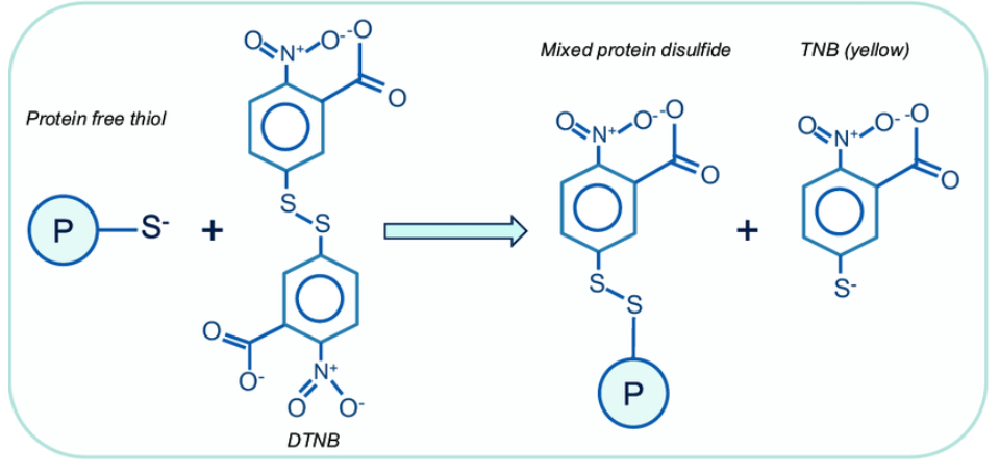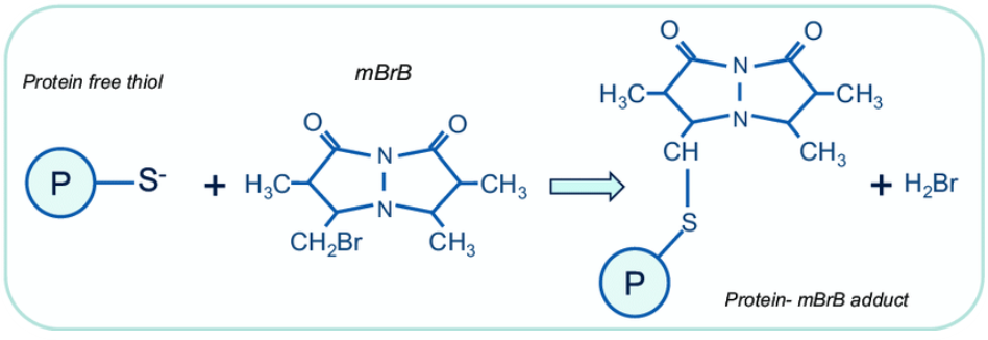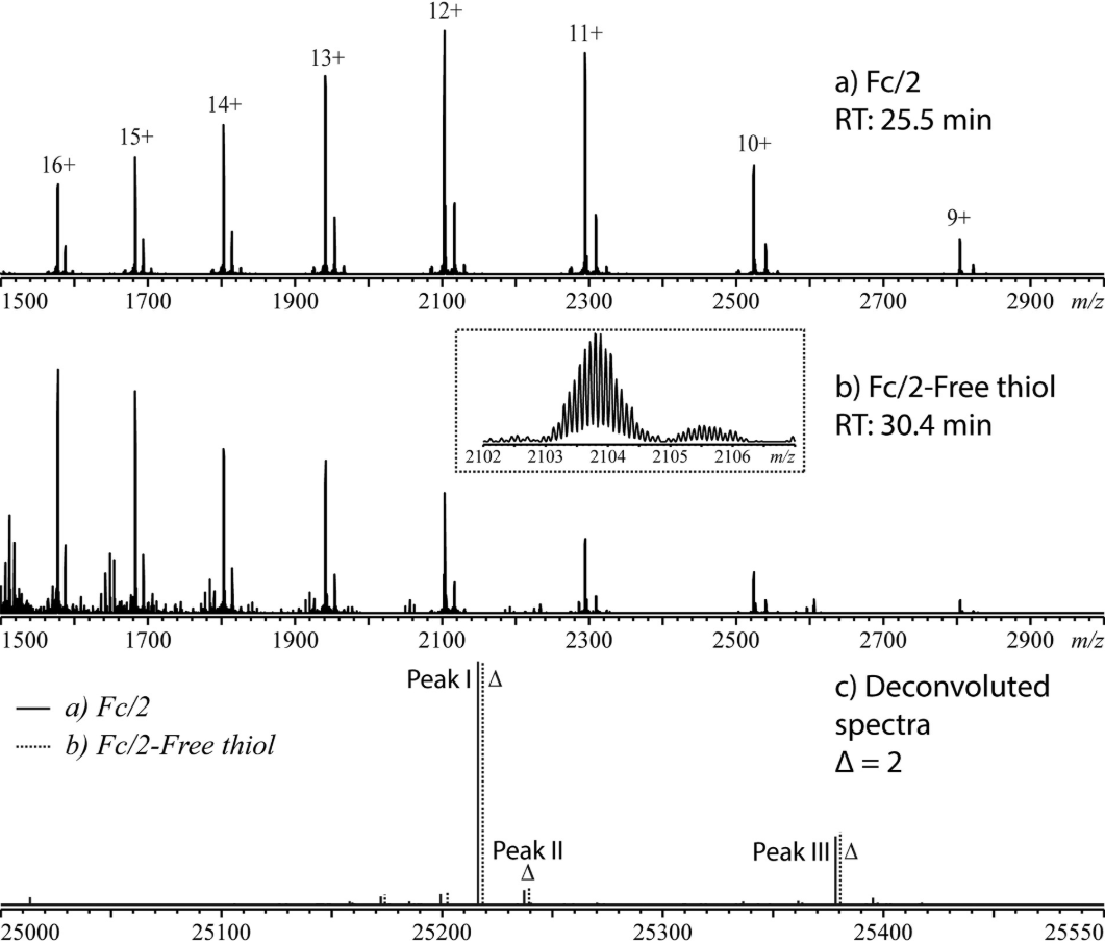Free Thiol Groups Quantification Service
- Purified proteins: Recombinant or native proteins in compatible buffers
- Antibody preparations: Monoclonal or polyclonal antibodies, ADC intermediates or finished products
- Peptides: Synthetic or natural peptides with potential free thiol groups
- For samples in complex formulations, biological fluids, or unknown matrices, please contact us in advance to assess compatibility
- Recommended storage: –80°C
- Ship samples on dry ice to maintain thiol integrity
Free thiol groups (–SH), also known as sulfhydryl groups, are functional moieties primarily derived from the side chains of cysteine residues in proteins and peptides. These groups are nucleophilic and redox-sensitive, capable of participating in a variety of biochemical reactions such as disulfide bond formation, metal ion coordination, and thiol-disulfide exchange. In physiological environments, thiol groups are critical for maintaining protein structure, enzymatic activity, and cellular redox balance. They also serve as key reactive handles for site-specific conjugation in biopharmaceutical design and protein engineering.
The free thiol groups quantification is essential for understanding protein conformation, folding status, oxidative modifications, and conjugation readiness. In biotherapeutic development, particularly with monoclonal antibodies, antibody-drug conjugates (ADCs), or fusion proteins, unintended free thiols may lead to protein aggregation, instability, or altered pharmacokinetics. Precise free thiol measurement enables control over conjugation stoichiometry, product heterogeneity, and lot-to-lot consistency. In basic research, thiol quantification supports studies in redox biology, enzyme catalysis, and oxidative stress response. Given their chemical lability and low abundance, accurate thiol analysis requires specialized, sensitive, and well-validated methodologies to ensure reliable data for both quality control and mechanistic studies.
Service at MtoZ Biolabs
MtoZ Biolabs provides an end-to-end Free Thiol Groups Quantification Service tailored to support a wide range of applications in research, development, and manufacturing. Free thiol quantification is typically based on the reactivity of thiol groups with sulfhydryl-specific reagents that yield detectable products. Several established methods of are commonly used:
💠Ellman’s Assay (DTNB method): One of the most widely adopted techniques, Ellman’s reagent (5,5’-dithiobis(2-nitrobenzoic acid), DTNB) reacts with free thiol groups to release 2-nitro-5-thiobenzoate (TNB), which absorbs strongly at 412 nm. The absorbance directly correlates with the concentration of free thiols.

Figure 1. The Principle of Ellman Assay
💠Fluorescent Labeling (e.g., Monobromobimane): Thiol-specific fluorogenic reagents such as monobromobimane (mBrB) react with –SH groups to form highly fluorescent adducts, detectable via fluorometry or HPLC.

Figure 2. Monobromobimane (mBrB) Reacts with the Thiols
💠LC-MS-based Quantification: For complex samples or site-specific thiol profiling, derivatization followed by liquid chromatography–mass spectrometry (LC-MS) enables precise identification and quantitation.

Figure 3. Mass Spectra of (a) Fc/2 Main Peak and (b) One of the Fc/2 Free Thiol Peaks of mAb-A, as well as (c) the Deconvoluted Mass Spectra Overlaid
Each method offers unique advantages in terms of sensitivity, specificity, and compatibility with different sample types. MtoZ Biolabs selects and optimizes the most appropriate method according to the customer’s experimental needs, matrix complexity, and regulatory context.
Service Advantages
✅Advanced Analytical Platform: Equipped with high-sensitivity spectrophotometers, fluorometers, and LC-MS/MS systems for accurate and reproducible thiol quantification.
✅Expert Scientific Team: Experienced in bioconjugation, redox biology, and protein chemistry to ensure reliable data interpretation and technical support.
✅Customizable Experimental Design: Flexible protocols tailored for various sample types, conjugation workflows, and regulatory requirements.
✅Rapid Turnaround Time: Streamlined workflows and efficient project coordination to meet tight development timelines.
Applications
Our Free Thiol Quantification Service can be applied in diverse research and industrial contexts:
1. Antibody-Drug Conjugate (ADC) Development
Determine conjugation site availability and monitor thiol content pre- and post-linker addition.
2. Biopharmaceutical Quality Control
Assess free thiol levels as part of release testing or comparability studies for monoclonal antibodies, fusion proteins, or biosimilars.
3. Protein Stability Studies
Monitor disulfide bond formation and redox balance under various storage or stress conditions.
4. Redox Biology Research
Quantify reactive thiol pools in enzymes, metabolic proteins, or signaling molecules.
Sample Submission Suggestions
1. Accepted Sample Types
2. Storage and Shipping
*Note: If you have specific requirements or need guidance on sample preparation, please do not hesitate to contact us.
Deliverables
1. Comprehensive Experimental Details
2. Materials, Instruments, and Methods
3. Total Ion Chromatogram & Quality Control Assessment (project-dependent)
4. Data Analysis, Preprocessing, and Estimation (project-dependent)
5. Bioinformatics Analysis
6. Raw Data Files
Free thiol groups serve as critical indicators of protein structure, reactivity, and functional potential. Precise quantification of these reactive groups is essential across numerous domains, from therapeutic protein design to redox biology. MtoZ Biolabs’ Free Thiol Groups Quantification Service delivers accurate, reproducible, and sensitive thiol measurements through optimized protocols and expert analytical platforms. Whether you are working on antibody engineering, conjugation chemistry, or redox signaling, our service provides the data quality and flexibility you need to drive innovation and meet regulatory expectations. Free project evaluation, welcome to learn more details!
Related Services
How to order?







